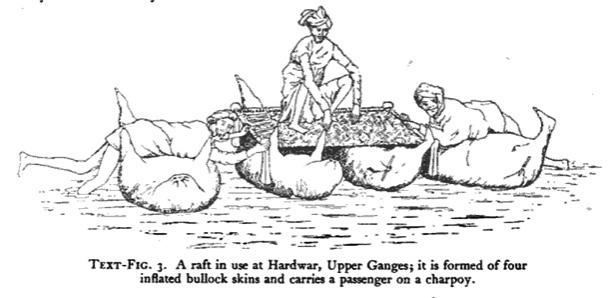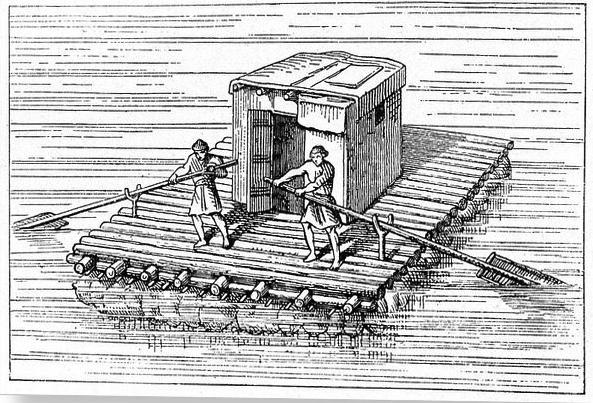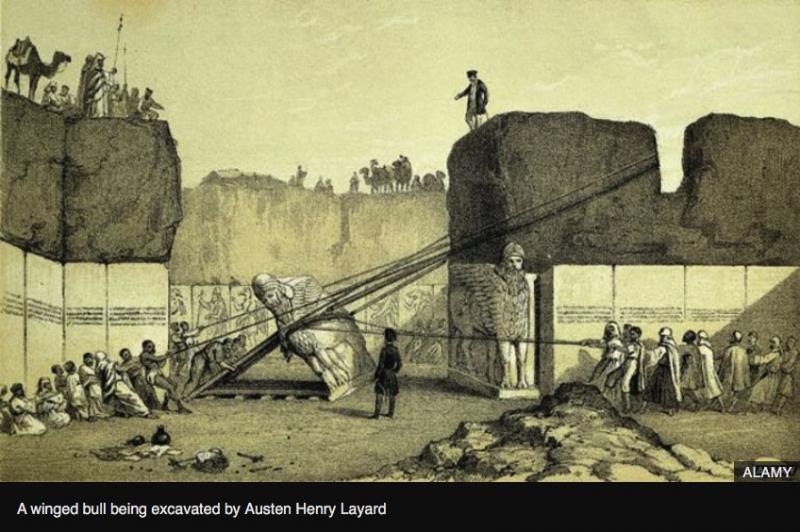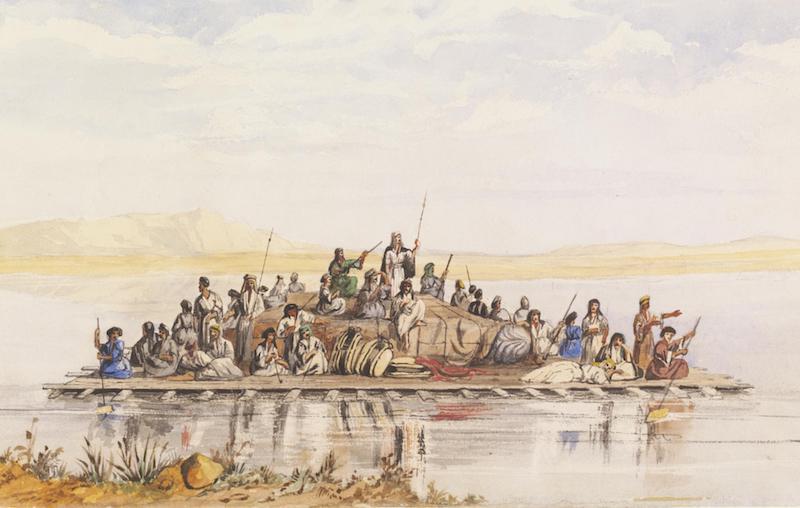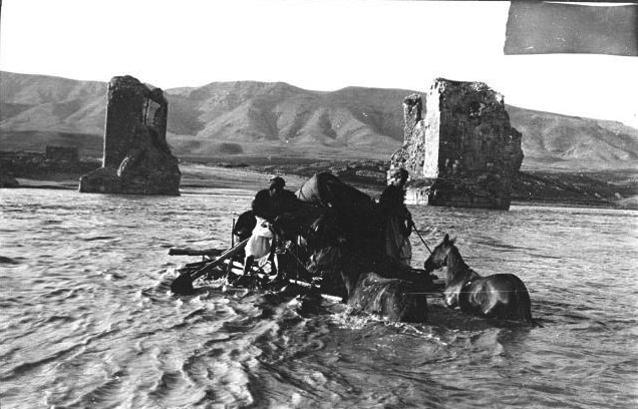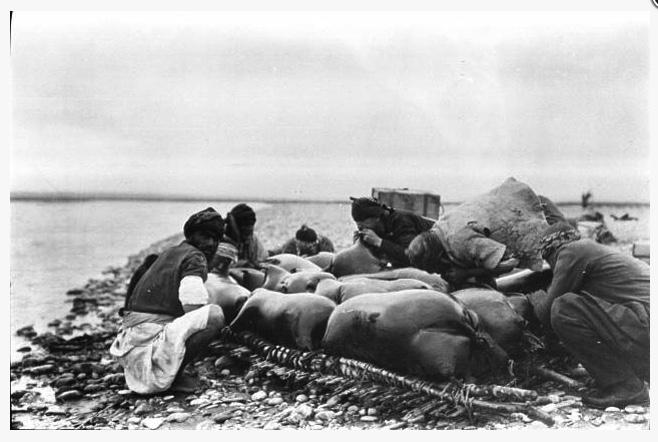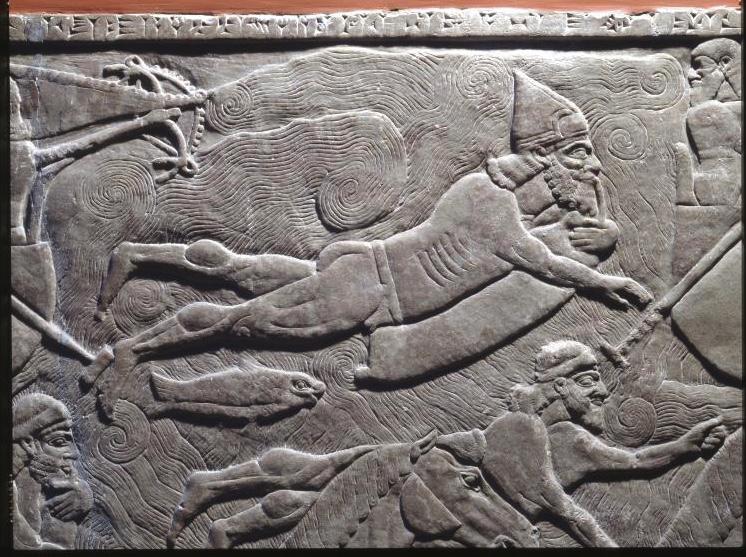
|
History of Ships Animal Skin Floats Jean Vaucher (August 2018) |

Animal Floats
A very primitive technique that allows people to cross bodies of water is to use inflated animal skins (or bladders) as floats. Soldiers of antiquity normally carried goatskins for their water; and these could just as easily serve as flotation devices. The oldest example is a bas-relief (see right) from ancient Mesopotamia now in the British Museum. It shows ancient Assyrians using bladders as floats 3000 years ago.For bigger loads, J. Hornell (p.21) mentions rafts made from the ox-hides - normally used as tents by armies of antiquity. Two such hides sewn together would act as a floating air mattress.
The process of manufacture is simple... A large tanned ox-skin, with holes perforated all round the edges, is laid on the ground, dry grass is piled on it and the whole then lashed into a sort of package by means of hide ropes passed through the holes round the edge. If goods are to be transported they are put inside; if human beings, they squat on the top or let their legs dangle in the water; in either case, swimmers pull and push the unwieldy craft across.
Around 300BC, Alexander used this method to transport 1500 cavalry and 4000 infantry across the Danube.
| Below, click on images to enlarge! Use the arrows to move to new images. |
Images from Antiquity
More commonly, many inflated skins would be combined to provide the buoyancy for rafts, just like modern floating docks. These rafts were used either as ferries, bridges or for long distance transport of goods downriver.
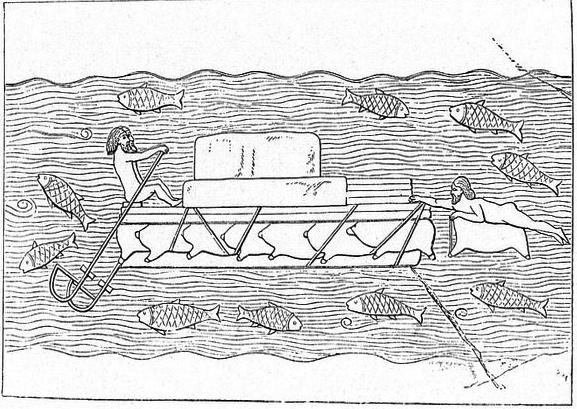 Assyrian men using inflated pig skins raft. From a fresco found in Dur-Sharrukin, Iraq [ Source ] |
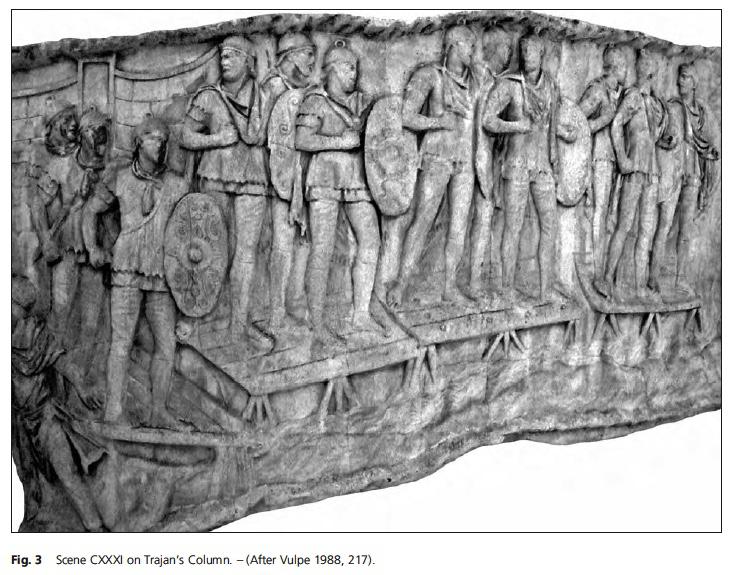
Romans crossing the Danube on a floating bridge. From Trajan's column, Rome (105 AD) [ Source ] |
Illustrations from the Common Era
Middle East rafts (1800s - 1900s )
Until very recently, rafts supported on inflated animal skins were in common use on the Tigris and Euphrates. These were called Keleks. Smaller ones were used to ferry people and goods across rivers. Larger cargo keleks were used to float goods downstream from Mosul to Baghdad.
Much of our information on Keleks comes from the writings of English travellers and archeologists who were fascinated by Ancient Mesopotamia.
Sir Austen Layard ( 1817 – 1894) travelled extensively in the area: as an archaeologist, artist, and diplomat. He is best known as the excavator of Nineveh, and many of his finds are now in the British Museum. Below we show how a huge Winged Bull (Lamassu) was transported downriver from Nimrud on a cargo kelek.
Another archeologist/explorer was Gertrude Bell who travelled extensively in the Middle East and worked as a diplomat during WWI. Newcastle University has a web archive of her documents. Below are her photographs of crossing rivers in Iraq on makeshift Keleks.
Modern Day Float Crafts
Photos from newspapers and blogs show that various kinds of floats are still used in impoverished parts of the world.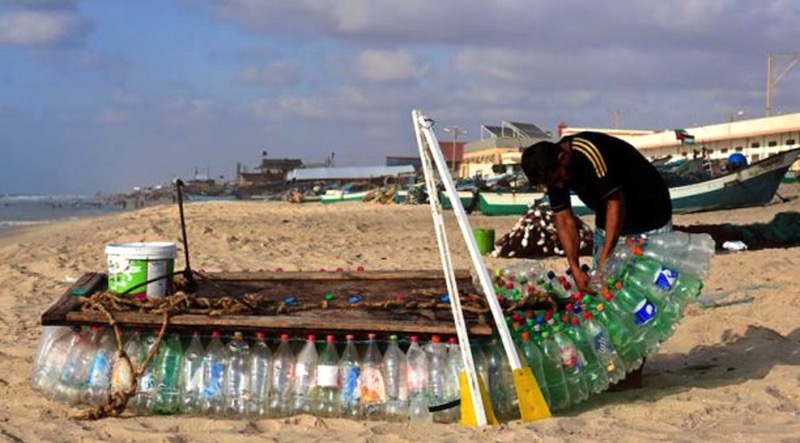
Times of Israel (Aug 2018)
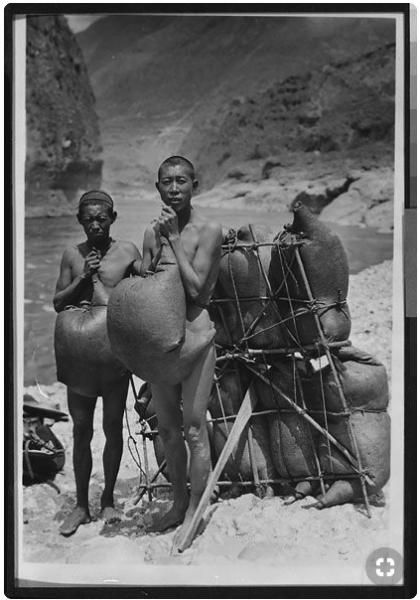
Yangtze, Western China
References:
Water Transport: Origins, J. HornellClassic Ships of Islam, Dionisius Agius (2008)
Gertrude Bell Archive
